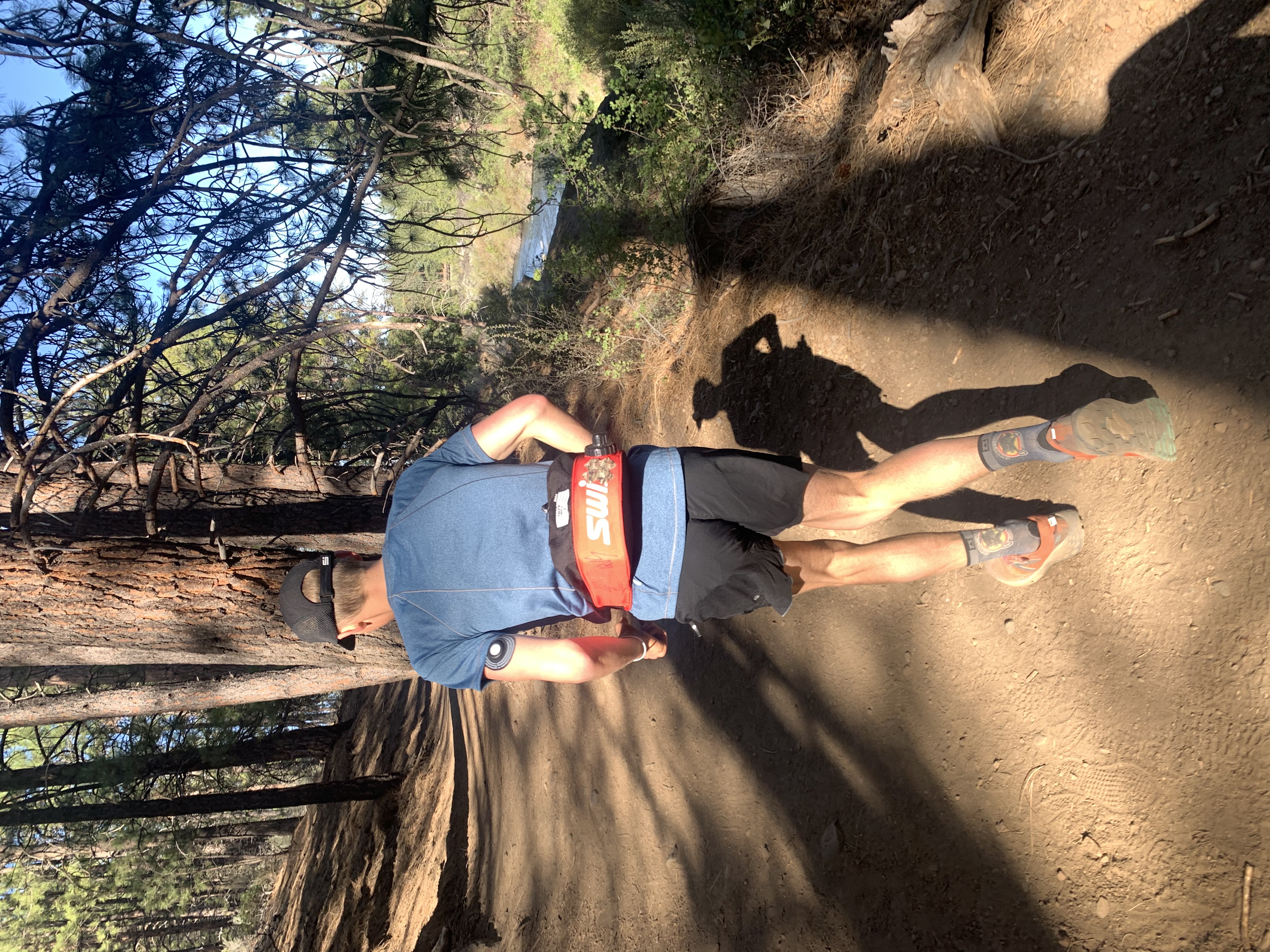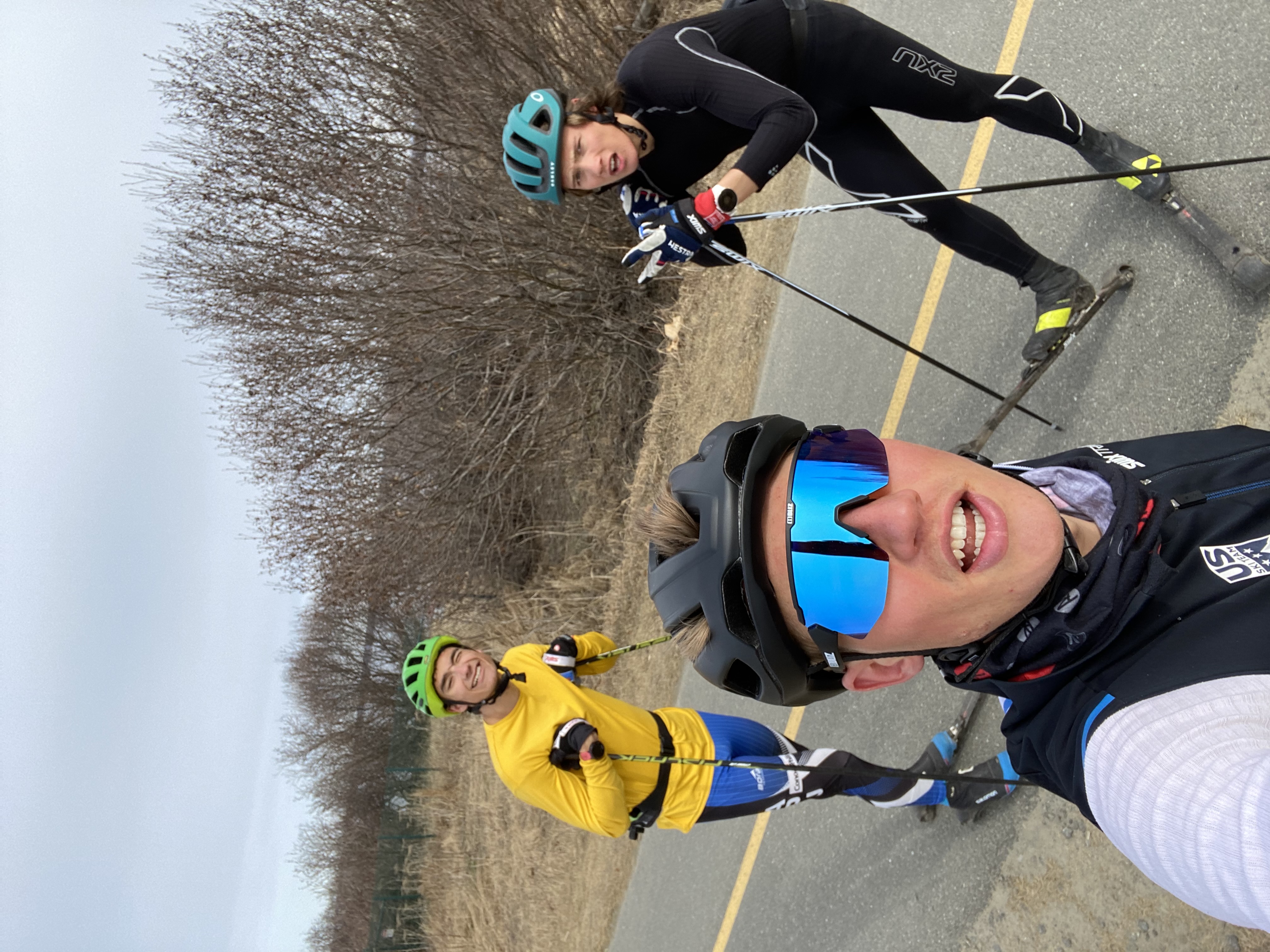Posted by By Gus Schumacher on May 27th 2021
Back Onto Dry-Land!
 If you’re like me (maybe you’re more ambitious…), you took some time away from the gym and other types of training after a winter of skiing and racing. Taking this break after the snow melts is a huge part of “training sustainability”; giving your mind and body a critical rest so that when *now* comes around, you’re ready to get back into more stressful training. By more stressful, I mean, running, roller skiing, harder intervals, longer distance sessions, and more weight in the gym. All of these summer training activities tend to be harder on your body, with the intention to create a physical response so you get stronger, fitter, and faster. However, this increase in physical stress can be dangerous if overdone, so I’m going to share how I ease back into heavy training loads.
If you’re like me (maybe you’re more ambitious…), you took some time away from the gym and other types of training after a winter of skiing and racing. Taking this break after the snow melts is a huge part of “training sustainability”; giving your mind and body a critical rest so that when *now* comes around, you’re ready to get back into more stressful training. By more stressful, I mean, running, roller skiing, harder intervals, longer distance sessions, and more weight in the gym. All of these summer training activities tend to be harder on your body, with the intention to create a physical response so you get stronger, fitter, and faster. However, this increase in physical stress can be dangerous if overdone, so I’m going to share how I ease back into heavy training loads.
 Running: This is the highest-risk training mode for injury for myself and many other people, so the beginning of running as a training tool needs to be very calculated. I’m no expert on this, but I learned a lot last year after an early-summer running injury (shin splints). There are better resources for running progressions, like this fasterskier article (https://fasterskier.com/2021/04/making-a-healthy-transition-to-running-as-the-seasons-change-with-jessica-yeaton/), but the basic observations for myself that I’m applying this year are being more aware of how much running I’m doing, how my technique is, and what surface I’m running on. I track all of this in my training log so that I can look back on how much running stress my body is getting, and tuning it so that my increases in mileage and intensity on foot every week are moderate. This allows my legs to adapt to these changes so that they’re ready for harder running sessions later in the summer when I need them.
Running: This is the highest-risk training mode for injury for myself and many other people, so the beginning of running as a training tool needs to be very calculated. I’m no expert on this, but I learned a lot last year after an early-summer running injury (shin splints). There are better resources for running progressions, like this fasterskier article (https://fasterskier.com/2021/04/making-a-healthy-transition-to-running-as-the-seasons-change-with-jessica-yeaton/), but the basic observations for myself that I’m applying this year are being more aware of how much running I’m doing, how my technique is, and what surface I’m running on. I track all of this in my training log so that I can look back on how much running stress my body is getting, and tuning it so that my increases in mileage and intensity on foot every week are moderate. This allows my legs to adapt to these changes so that they’re ready for harder running sessions later in the summer when I need them.
Rollerskiing: This is generally a smoother transition than running, as it often hasn’t been as long since I stopped skiing, but it’s still important to increase slowly. Rollerskiing is a little more strength-biased than skiing, and it’s harder on tendons, especially in your elbows and shoulders. It’s also a little more awkward to have short, heavy things on your feet, and there’s generally not slippery gravel on ski trails, so be sure to give yourself some time to warm up to this activity. A way I like to kick off roller skiing for the year is with an easy flat classic roll, as well as a light agility session on skate skis to get used to the basic maneuvers you’ll need to avoid crashing on hard pavement. As you get comfortable on rollerskis, you can start to introduce the harder loops and training sessions. Strength: A good base in strength is imperative to better adaptations later in the year, so I’ve been taught to start light and easy, focusing on really stable, basic movements. This means maybe doing half the reps and weight you normally would in the fall, but making sure you’re doing them with better technique than ever before. One way to do this is to film yourself or have a coach watch you, and tweak those movements until they are really solid. Weight training is a super easy way to hurt yourself, but when used safely and correctly, can translate to big advantages on the trails in the winter. Starting back at square one (or maybe 2) for strength isn’t super necessary if you’ve been consistent with it, but it isn’t a bad idea to make sure you’re still moving well if you haven’t checked up on that in a while.
Strength: A good base in strength is imperative to better adaptations later in the year, so I’ve been taught to start light and easy, focusing on really stable, basic movements. This means maybe doing half the reps and weight you normally would in the fall, but making sure you’re doing them with better technique than ever before. One way to do this is to film yourself or have a coach watch you, and tweak those movements until they are really solid. Weight training is a super easy way to hurt yourself, but when used safely and correctly, can translate to big advantages on the trails in the winter. Starting back at square one (or maybe 2) for strength isn’t super necessary if you’ve been consistent with it, but it isn’t a bad idea to make sure you’re still moving well if you haven’t checked up on that in a while.
Overall: Training for nordic skiing can be hard, no matter what level you’re at, and increases in volume and intensity of training are what make you fast. You just have to be cautious, as they can also slow you down if done incorrectly. Good practice is to increase steadily and slowly, making sure you’re aware of how your body is feeling and recovering after new activities.
Happy training and enjoy summer!!!
Gus

